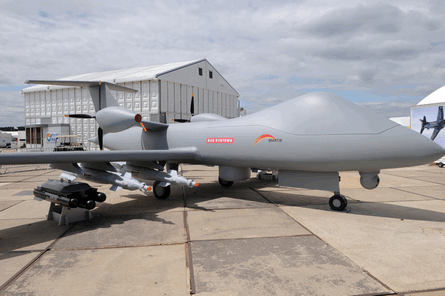The Mantis UAS advanced concept technology (ACT) demonstrator programme revealed at Farnborough on Monday will see BAE Systems and the UK Ministry of Defence jointly funding the first phase of a programme to develop a new Unmanned Autonomous System (UAS).
BAE will be joined by a number of UK industrial partners including Rolls Royce, QinetiQ, GE Aviation, SELEX Galileo and Meggitt.
The twin-engined Mantis is intended to shape technology planned to be incorporated in future UK unmanned systems, and particularly to demonstrate the potential of a large unmanned aircraft to support future UK Operational needs.
Mark Kane, managing director of autonomous systems and future capability at BAE Systems, says: “Mantis is another important step forward in the development of UAS capabilities in the UK and will provide the tangible military capability and levels of performance required for future UK UAS Operations.”
 |
|---|
Air Vice Marshal Simon Bollom, DG combat air, described how the Mantis ACT demonstrator would provide an opportunity to exploit emerging technologies, while also giving useful indications of how the acquisition process might be tailored to deliver capability more swiftly into fast-changing military environments.
“A development programme such as Mantis will help maintain UK indigenous capabilities in this fast evolving area” he says. But he was cautious about any production of Mantis. “We expect to see positive early results before deciding about further investment in a longer-term programme,” he warned.
Design and manufacture of the aircraft and the associated ground control infrastructure is already underway. Final assembly, ground testing and infrastructure integration testing will take place later this year, with the first flight currently scheduled for early 2009.
The Mantis will be built using low-cost advanced construction techniques developed on earlier BAE Systems UAV programmes, and will feature flexible external stores carriage and provide for a wide range of ‘plug and play’ systems. The design will be optimized to impose the lowest possible logistic footprint and for ease of support in an effort to dramatically reduce through-life operating costs.
The aircraft has a triplex flight control system, which will give high system reliability and integrity, while onboard autonomy will be sufficient to significantly reduce operator workload and increase system performance.
Source: Flight International























